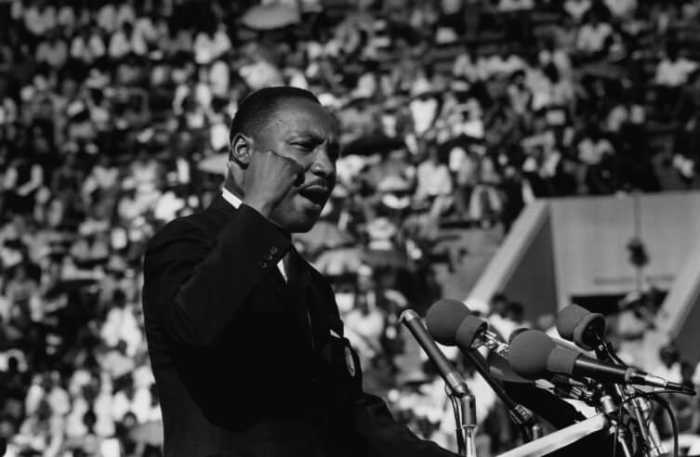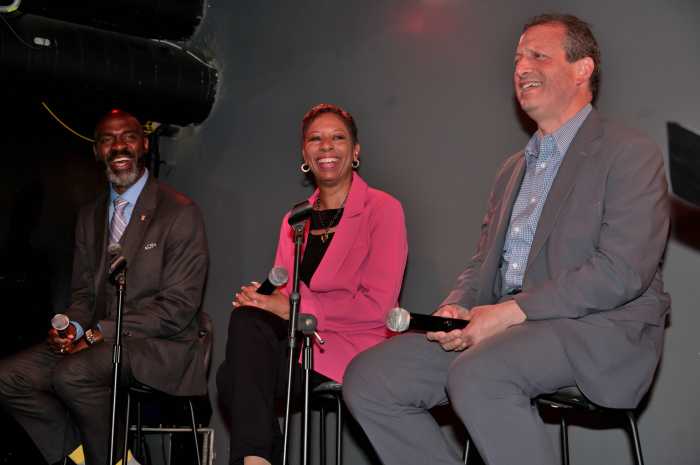Late last week, photographer Tieshka Smith hung images in the Next City storefront to promote “Portraits of Brewerytown,” an exhibition of her photo essay on the North Philly neighborhood. Over the course of a few hours, dozens of men stopped on the sidewalk, filled with emotion, to gaze at the photo of Brewerytown resident and longtime boxing trainer Stan Williams.
“When a community is transforming, the question becomes, what happens to the memories and the collective experience of those that were there before the change?” said Smith, shortly before Friday’s opening reception. “I’m trying to create images that honor the experience of those people — reconnect them to their own lives in that neighborhood.”
It was Smith’s recent Germantown project that caught the eye of Next City, who quickly commissioned her for a Brewerytown effort. “Portraits of Brewerytown” is Next City’s first event in their new Girard Avenue Storefront for Urban Innovation.
It’s an interesting choice for the Philly-based nonprofit: Smith is often critical of urban planners and outside interests attempting to “transition” neighborhoods. Urban planning and development is at the core of Next City’s mission.
“I learned an important lesson in Germantown: Most of the people I engaged on the street were not the same people that were making decisions about how the community was going to transform itself,” says Smith. “So when I engage people, I make sure to talk to them about the plans that are out there for their neighborhood.”
What’s next
Founded by a pair of Yale University grads, Next City began in 2003 as a magazine reporting on urban development in the United States. With major contributions from the Ford Foundation and the William Penn Foundation, among many others, Next City is now a web-only publication, focused on issues affecting urban environments worldwide.
In the neighborhood
Diana Lind, executive director of Next City, was among those who attended the crowded opening reception for “Portraits of Brewerytown.”
“We had been working in Center City offices for a long time. The whole purpose of what we were doing was trying to source these ideas about trying to improve the built environment,” she said, straining her voice above a band playing just behind her. “But you end up in an echo chamber if you don’t actually interact with communities. So we’ve decided to be based in a neighborhood — to have a presence.”
2012 was a banner year for Next City: They transitioned their publication into an entirely digital endeavor, while creating a much anticipated Philadelphia Journalism Fellowship. Plus, they opened a new events space on 27th Street and Girard Avenue, and received a TED City 2.0 grant to make it happen.

























